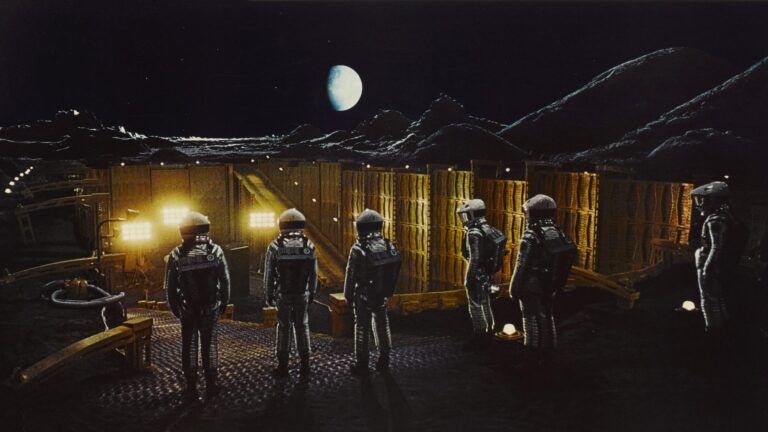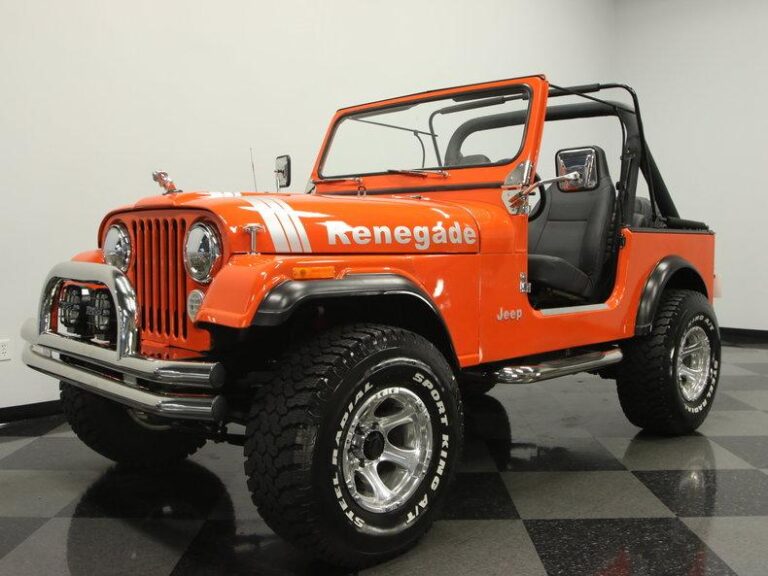Old Jeep Truck For Sale: Your Ultimate Guide to Classic American Iron
Old Jeep Truck For Sale: Your Ultimate Guide to Classic American Iron /jeeps.truckstrend.com
In a world increasingly dominated by sleek, modern vehicles, there’s a timeless allure to the rugged, unpretentious charm of an old Jeep truck. More than just a mode of transport, these vintage workhorses represent a tangible piece of American history, a testament to enduring utility, and a symbol of an adventurous spirit. For many, finding an "Old Jeep Truck For Sale" isn’t merely a transaction; it’s the pursuit of a passion, a journey into classic automotive culture, and an investment in a machine built to outlast generations.
This comprehensive guide will navigate the exciting landscape of classic Jeep trucks, providing insights into their enduring appeal, identifying the different models, offering practical advice on finding and inspecting your ideal rig, and equipping you with the knowledge to embark on your own vintage Jeep truck adventure. Whether you’re a seasoned enthusiast or a curious newcomer, prepare to delve into the world where character trumps chrome, and every dent tells a story.
Old Jeep Truck For Sale: Your Ultimate Guide to Classic American Iron
I. Why Buy an Old Jeep Truck? The Enduring Appeal
The decision to seek out an old Jeep truck is often driven by a blend of nostalgia, practicality, and an appreciation for mechanical simplicity. Here’s why these vehicles continue to captivate:
- Nostalgia & Character: Unlike modern vehicles designed in wind tunnels, old Jeep trucks possess an unmistakable character. Their boxy lines, exposed hinges, and utilitarian dashboards evoke a simpler time, resonating deeply with those who appreciate authenticity and a connection to automotive heritage. Each scratch, faded paint spot, or weathered interior element contributes to its unique story.
- Durability & Reliability: Built with robust, often over-engineered components, many old Jeep trucks were designed for tough environments and demanding work. Their mechanical simplicity means fewer complex electronic systems to fail and easier, more affordable repairs. With proper maintenance, these trucks are known to run for hundreds of thousands of miles.
- Unmatched Off-Road Prowess: Jeep’s legendary 4×4 capability is ingrained in the DNA of these trucks. From the early Willys models to the J-series Gladiators, they were engineered to tackle challenging terrain, making them highly sought after by off-road enthusiasts and overlanders.
- Investment Potential: Unlike many depreciating assets, well-maintained or restored old Jeep trucks, particularly rarer models, can appreciate in value over time. They are becoming increasingly desirable collector’s items, offering a unique blend of utility and potential financial return.
- Versatility: An old Jeep truck can serve many roles: a weekend trail rig, a dependable farm vehicle, a head-turning show truck, or even a unique daily driver for those who embrace the classic experience. Their open beds offer practical hauling capabilities, while their robust chassis can handle various modifications.
- Thriving Community & Parts Availability: The classic Jeep community is vast and incredibly supportive. Enthusiast forums, clubs, and online groups provide a wealth of knowledge, shared experiences, and a strong network for finding parts, advice, and even specialized mechanics. Thanks to shared platforms with popular Jeeps (like the Cherokee XJ for the Comanche), many components remain readily available, both new and used.

II. Identifying the Right Old Jeep Truck for You: Models and Eras
Before diving into the market, it’s crucial to understand the various iterations of Jeep trucks, as each offers a distinct character, capability, and set of considerations.
-
Willys-Overland Pickups (1940s-1960s):
- Models: Willys MB/CJ-2A/3A/5/6-based pickups, Willys FC (Forward Control) series.
- Characteristics: These are the true pioneers. The pickups based on the civilian Jeeps are compact, incredibly rugged, and purely utilitarian, often featuring flat fenders and minimal creature comforts. The FC series (FC-150, FC-170) is instantly recognizable by its cab-over-engine design, offering excellent visibility and a large bed relative to its footprint.
- Considerations: Often require significant restoration, parts can be scarcer for some components, lower highway speeds, and basic amenities. Highly collectible.
-
Jeep Gladiator / J-Series (1962-1988):
- Models: J10, J20, J2000, J4000, Honcho, Laredo, Pioneer. These are full-size trucks.
- Characteristics: Built on the robust SJ platform (shared with the Wagoneer), the J-series trucks are larger, more comfortable, and often equipped with powerful AMC inline-six or V8 engines. They evolved over their long production run, offering varying levels of trim, from basic work trucks to luxurious Laredo and Honcho packages. They are renowned for their strength, towing capacity, and iconic styling.
- Considerations: Prone to rust in common areas (rocker panels, bed floor), V8s can be thirsty, but mechanical parts are generally abundant. Excellent choice for those wanting a full-size classic.
-
Jeep Comanche (MJ) (1986-1992):
- Models: Based on the popular Cherokee (XJ) SUV.
- Characteristics: The last true Jeep truck before the Gladiator revival, the Comanche combined the agility and unibody construction of the XJ Cherokee with a conventional pickup bed. Available with inline-4, V6, and the legendary 4.0L inline-6 engine, it offered a more modern driving experience, better fuel efficiency than the J-series, and a good balance of utility and maneuverability.
- Considerations: Unibody construction makes frame rust a critical inspection point, bed is integrated rather than separate, becoming increasingly collectible.
Key Considerations for Any Model: Beyond the specific model, assess the vehicle’s original drivetrain (4×4 vs. 2WD), engine type (original vs. swap), transmission (manual vs. automatic), and the extent of any modifications. Your intended use should guide your choice.
III. Where to Find Your Vintage Workhorse: Sourcing Strategies
Finding the right old Jeep truck requires patience and a multi-pronged approach.
- Online Marketplaces:
- Pros: Wide reach, many listings, easy to filter.
- Cons: Can be competitive, difficult to verify condition remotely, scams exist.
- Platforms: Craigslist (local searches are key), Facebook Marketplace (often good for local private sales, enthusiast groups), eBay Motors (for broader reach, sometimes includes restored vehicles).
- Specialized Forums & Clubs:
- Pros: Dedicated communities, knowledgeable sellers, often well-documented vehicles, potential for "first dibs."
- Cons: Slower pace, fewer listings than general marketplaces.
- Examples: Full Size Jeep Network (FSJN), Comanche Club, various regional Jeep clubs.
- Classic Car Dealerships & Consignment Lots:
- Pros: Vehicles often pre-inspected, some offer warranties (rare), good for higher-end or restored examples.
- Cons: Higher prices due to overhead and markup.
- Auctions:
- Pros: Opportunity to find rare or high-quality restored vehicles.
- Cons: High pressure, "as-is" sales, difficult for pre-purchase inspection, buyer’s premiums.
- Examples: Mecum, Barrett-Jackson (for premium vehicles), local estate auctions.
- Word of Mouth / Local Ads:
- Pros: Often where hidden gems are found, potential for better deals from non-enthusiast sellers.
- Cons: Requires legwork, less structured searching.
Tips for Sourcing:
- Be Patient: The right truck might not appear overnight.
- Be Thorough: Ask for many photos, videos, and detailed descriptions.
- Network: Talk to other enthusiasts, mechanics, and restorers.
- Set a Budget: Factor in purchase price, potential repairs, and transportation.
IV. What to Look For: A Pre-Purchase Inspection Guide
Once you’ve found a promising candidate, a thorough inspection is paramount. If you’re not mechanically inclined, bring a trusted mechanic or an experienced friend.
-
1. Body & Frame:
- Rust (Critical!): Inspect frame rails (especially near spring hangers and body mounts), floorboards, rocker panels, cab corners, bed floor, and wheel wells. Surface rust is manageable; widespread rot is a deal-breaker or requires extensive, costly repair.
- Dents & Previous Repairs: Look for signs of bondo, poor paint matching, or uneven panel gaps which could indicate accident history or rushed repairs.
- Glass & Trim: Check for cracks, seals, and condition of chrome/aluminum trim.
-
2. Engine & Drivetrain:
- Engine: Check for leaks (oil, coolant), strange noises (knocks, ticks, excessive smoke), proper starting (cold and warm), and smooth idling. Inspect hoses, belts, and wiring.
- Transmission: Manuals should shift smoothly without grinding. Automatics should engage gears promptly and shift without harshness or slipping. Check fluid levels and color.
- Transfer Case & Differentials: Check for leaks, engagement of 4WD, and unusual noises during a test drive.
- Exhaust: Look for leaks or excessive rust.
-
3. Suspension & Steering:
- Shocks & Springs: Look for worn or leaky shocks, sagging springs.
- Bushings: Inspect all suspension bushings for cracks or deterioration.
- Steering: Check for excessive play in the steering wheel, fluid leaks from the power steering pump or box.
-
4. Brakes:
- Pedal Feel: Should be firm, not spongy.
- Stopping Power: Test under various conditions.
- Leaks: Inspect brake lines and wheel cylinders/calipers for fluid leaks.
-
5. Electrical:
- Lights: Test all exterior and interior lights.
- Gauges: Ensure all gauges (speedometer, odometer, fuel, temp, oil pressure, voltage) are working.
- Accessories: Test wipers, horn, radio, heater/AC (if equipped). Look for signs of aftermarket wiring "hacks."
-
6. Interior:
- Seats & Upholstery: Check for rips, tears, and overall condition.
- Dash & Controls: Look for cracks, missing knobs, and functionality.
- Headliner & Carpeting: Signs of leaks or neglect.
-
7. Documentation:
- Ensure it’s clear and matches the VIN.
- Service Records: Any history of maintenance or repairs is a big plus.
-
8. Test Drive:
- Listen for unusual noises, feel for vibrations, test brakes, steering, and 4WD engagement (if applicable). Drive at various speeds and over different terrains.
V. Ownership and Maintenance: Keeping Your Classic Alive
Owning an old Jeep truck is a commitment, but a rewarding one. Here’s what to expect:
-
Common Issues:
- Rust: Remains the perennial enemy. Proactive rust prevention (washing off salt, undercoating, addressing minor spots quickly) is crucial.
- Carburetor Issues: For older models, carburetors can be finicky, requiring tuning or rebuilding. Many opt for modern EFI conversions.
- Electrical Gremlins: Older wiring can degrade, leading to intermittent issues. A wiring diagram and patience are your friends.
- Worn Suspension/Steering Components: Bushings, ball joints, tie rods, and shocks are wear items and will likely need replacement.
- Oil Leaks: Minor leaks are common; major ones need addressing.
-
Parts Availability: Generally good, especially for the J-series and Comanche due to their popularity and shared components with other Jeep models. Aftermarket support is robust for common upgrades and maintenance items. Specialist vendors exist for rarer components.
-
Maintenance Tips:
- Regular Fluid Changes: Engine oil, transmission fluid, transfer case fluid, differential fluid, coolant.
- Grease Zerk Fittings: Keep suspension and steering components well-lubricated.
- Inspect Regularly: Catch small issues before they become major problems.
- Learn to DIY: Many basic repairs are straightforward and rewarding to do yourself.
- Rust Prevention: Clean underneath regularly, especially if driving in salty conditions.
-
Modifications: Many owners choose to modify their old Jeep trucks for improved performance, off-road capability, or modern comfort. Common mods include lift kits, larger tires, engine swaps (e.g., LS swaps for more power and reliability), disc brake conversions, power steering upgrades, and adding air conditioning. Balance originality with usability based on your goals.
VI. Pricing an Old Jeep Truck: What to Expect
The price of an old Jeep truck varies wildly depending on several factors.
- Model/Rarity: Rarer models (like early Willys FCs or pristine Honchos) command higher prices.
- Condition: This is the biggest factor. A rust-free, fully restored truck will cost significantly more than a non-running project.
- Engine/Drivetrain: Original, desirable engines (like the AMC 401 V8) can add value. Running and driving condition is key.
- Modifications: Well-done, tasteful modifications can add value, but poorly executed or extreme mods can detract.
- Location: Prices can vary regionally.
Here’s a general price table to give you an idea (prices in USD, highly variable):
| Model/Series | Condition: Project (Non-Running/Heavy Rust) | Condition: Driver-Quality (Runs/Drives, Needs Work) | Condition: Good Condition (Solid, Minor Flaws) | Condition: Fully Restored / Show Quality |
|---|---|---|---|---|
| Willys Pickups (1940s-60s) | $1,000 – $5,000 | $5,000 – $15,000 | $15,000 – $30,000 | $30,000 – $60,000+ |
| Jeep J-Series (1962-88) | $1,500 – $7,000 | $7,000 – $20,000 | $20,000 – $40,000 | $40,000 – $80,000+ |
| Jeep Comanche (MJ) (1986-92) | $1,000 – $6,000 | $6,000 – $18,000 | $18,000 – $35,000 | $35,000 – $70,000+ |
| Willys FC Series (1956-65) | $2,000 – $8,000 | $8,000 – $25,000 | $25,000 – $50,000 | $50,000 – $100,000+ |
Note: These are rough estimates. A unique history, rare options, or a highly sought-after specification can significantly impact the final price. Always do your research and compare multiple listings.
VII. Frequently Asked Questions (FAQ)
Q1: Are old Jeep trucks reliable?
A1: With proper maintenance and attention, yes. Their mechanical simplicity makes them robust and easier to diagnose and repair than modern vehicles. However, they are old, so expect more frequent maintenance and the occasional unexpected issue.
Q2: Are parts hard to find for old Jeep trucks?
A2: Generally no, especially for popular models like the J-series and Comanche. Many mechanical parts are shared with other common Jeep and AMC vehicles. While some unique trim pieces or body panels can be challenging, a strong aftermarket and enthusiast community provide good support.
Q3: Can I use an old Jeep truck as a daily driver?
A3: It depends on the truck’s condition and your tolerance for classic vehicle quirks. A well-maintained or mildly restored J-series or Comanche can certainly serve as a daily driver, especially if upgraded with modern comforts like EFI or power steering. Willys models are generally less suited for modern highway speeds and comfort.
Q4: What’s the best model for a beginner?
A4: The Jeep Comanche (MJ) is often recommended for beginners due to its more modern design, better highway manners, and excellent parts availability (sharing many components with the ubiquitous Cherokee XJ). The J-series is also a good choice if you’re comfortable with full-size truck maintenance.
Q5: How much does it cost to restore an old Jeep truck?
A5: Restoration costs can range from a few thousand dollars for a basic refresh to well over $50,000 or even $100,000 for a professional, frame-off, show-quality restoration. It heavily depends on the starting condition, the level of restoration desired, and whether you do the work yourself or hire professionals.
Q6: Do old Jeep trucks hold their value?
A6: Many models, especially those in good condition or professionally restored, tend to hold or even appreciate in value. They are becoming increasingly desirable collector vehicles. Their value is largely driven by rarity, condition, and historical significance.
Conclusion
The pursuit of an "Old Jeep Truck For Sale" is more than just searching for a vehicle; it’s an embarkation on a journey into automotive history, a commitment to classic machinery, and an entry into a vibrant community of enthusiasts. These trucks offer a unique blend of rugged utility, timeless style, and a connection to an era of simpler, more robust engineering.
Whether you envision tackling off-road trails, hauling gear, or simply cruising down the highway turning heads, the perfect vintage Jeep truck is out there. With careful research, a thorough inspection, and a dose of patience, you can find a piece of American iron that not only meets your needs but also becomes a cherished part of your life. Owning an old Jeep truck isn’t just about driving; it’s about experiencing a legacy, one mile, and one adventure at a time.





